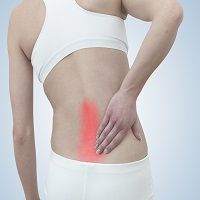Article
Not Just for Baseball Sluggers Anymore: HGH and Steroids Show Promise for Back Pain
Author(s):
A recent study looked at the effect from injections of recombinant human growth hormone (HGH) and testosterone to the painful and dysfunctional areas in patients with chronic lower back pain.

Human growth hormone (HGH) and steroids—proven performance-enhancers that were once the fuel behind the high-powered offenses of Major League Baseball—are increasingly becoming outcasts in the sports world. But while their effectiveness (and potential unfairness) make them dirty words for stat geeks, HGH and steroids continue to emerge as tools in the pain care toolbox.
A recent study in The Journal of Pain Research looked at the effect from injections of recombinant HGH and testosterone to the painful and dysfunctional areas in patients with chronic lower back pain. Pain ratings and self-rated functional outcomes were assessed.
Thus far, long-term outcomes for HGH and testosterone injections for lower back pain (LBP) and chronic lower back pain (CLBP) have been mixed. An ongoing problem is the lack of a standardized definition for CLBP, with some studies considering it pain beyond 3 months, while others simply refer to “pain lasting longer than the expected healing time.”
The best results are typically for lumbar facet joint injection and physiotherapy treatment. Facet and sacroiliac joint denervation have demonstrated successful moderate-duration pain relief when the joint is determined to be the source of pain, but this treatment destroys some nervous tissue and, according to the study authors, “does not directly address pathology or modulate pain from areas other than the joint.”
In the case study presented in The Journal of Pain Research, 60 participants suffering from CLBP were given an experimental treatment. Those who responded favorably to diagnostic blocks were given injections of HGH and testosterone in the treated areas, along with some follow-up manipulation and impairment-based exercises. Of the 60 patients selected, 39 completed all aspects of the study. Those patients receiving the intervention reported a significant decrease in pain ratings (P<.01) and a significant improvement in self-rated scores on the Oswestry Disability Index (ODI) (P<.01)
Within the ODI results, 41% of the participants reported a greater than 50% improvement. There was also a statistically significant improvement in the participants’ reporting of symptoms, with an overall self-reported improvement of 74%, including 92% reporting a 50% or greater improvement (P<.001).Of those patients who did not complete all aspects of the study, one was due to pain related to the injections, while the others were for nonstudy factors.
“The intervention appeared to be safe and the results provide a reasonable expectation that the intervention would be beneficial for a population of individuals with chronic nonradicular lower back pain,” the study authors note.
The next step is a randomized, controlled trial for which controls for psychosocial and other variables can be instituted—a noted limitation of this study.




